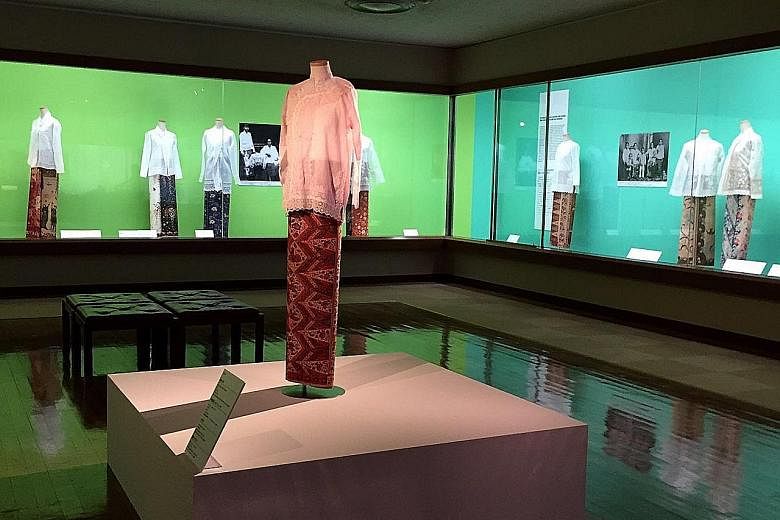More than 50 pieces of garments and textiles from the collection of prominent Singapore Peranakan figure Lee Kip Lee have found a new home in Fukuoka, Japan.
The items were donated by the family to the Fukuoka Art Museum to mark 50 years of diplomatic relations between Japan and Singapore, as well as the family's close ties to the Japanese city.
The gift was commemorated at the opening of the exhibition, titled Singapore, Sarong Kebaya And Style, at the museum last week. It is organised in partnership with Singapore's Asian Civilisations Museum.
Mr Lee's son Peter, 53, a Peranakan culture scholar, who was a curator of the show, tells The Straits Times over the telephone from Japan: "My family has been eager to promote Peranakan heritage to other parts of the world. If a museum is interested, we are more than happy to augment their collection."
They have donated textiles and art to museums overseas, including Yale University Art Gallery in the United States and Adelaide's Art Gallery of South Australia. They also donated 425 garments to Singapore's Peranakan Museum in 2011.
Peter says: "The Fukuoka Art Museum has a strong collection of South-east Asian textiles, including batik, and its curator, Ms Etsuko Iwanaga, is an expert in the field, so it seemed natural for us to donate items to its collection."
The family's connection to the city, through his brother, singer- songwriter Dick Lee, was another "emotional reason" for the gift, he adds. Dick, whose music career took off in Japan in the 1990s, was the recipient of the Fukuoka Prize for Arts and Culture in 2003.
The donation, made in the name of the senior Mr Lee and his late wife, Elizabeth, comprises a gift of eight items made in June last year and 46 items donated last month.
The museum did not disclose the value of the donation, which includes garments such as baju panjang (long-sleeved tunics), handkerchiefs and embroidered panels for use in shoes. The items date from the late 19th century to early 20th century.
Chief curator Iwanaga, 53, says: "As far as I know, this gift is the first sizeable collection of Peranakan fashion to be donated to a museum in Japan. You can see the development of baju panjang through this collection and the gifted textiles present new ways of thinking about how textiles were circulated in Asia."
She adds that the family's donation of tops such as baju panjang complements the museum's collection of about 450 pieces of batik sarong and kain panjang, garments that are worn as skirts.
The donation is also the first that the museum has received from Singapore and 15 of the gifted items are on display in the newly opened sarong kebaya exhibition, which features 136 artefacts, including pieces of sarong kebaya, Indian chintz robes, jewellery and beaded sandals.
The show looks at how the Peranakan garment, sarong kebaya, is a form of dress that is shared across the Indian Ocean and throughout South-east Asia.
This was the same premise for the Peranakan Museum's 2011 exhibition, Sarong Kebaya, also curated by Mr Lee. His research was published by the Asian Civilisations Museum in the 2014 book, Sarong Kebaya: Peranakan Fashion In An Interconnected World, 1500-1950.
The show in Fukuoka runs until June before travelling to the Shoto Museum of Art in Tokyo in July.
Ms Iwanaga says: "We are not able to show the rest of the gifts for a while because the museum will close for a major renovation from September to March 2019. But after the re-opening, we would like to display them with our own collection of batik."


